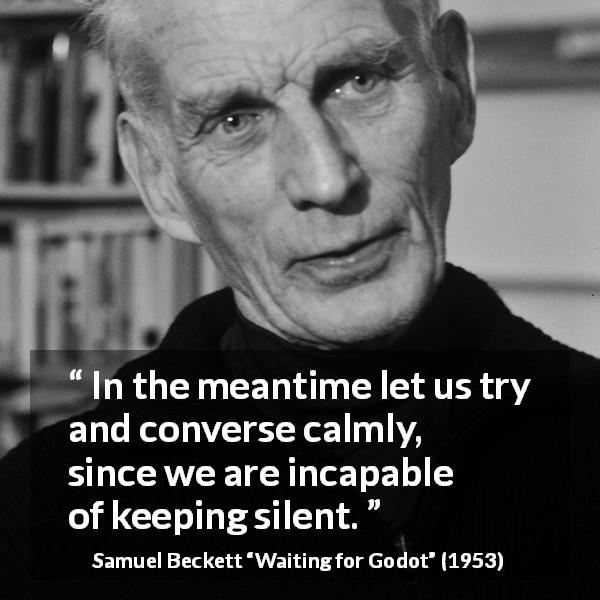

At the beginning of both acts, the first discussion concerns a beating that Estragon received just prior to their meeting. Also, too, Vladimir, when first noticing Estragon, uses virtually the same words: "So there you are again" in Act I and "There you are again" in Act II. Among these is the emphasis on Estragon's boots. At the beginning of each act, for example, several identical concerns should be noted. There are many lesser actions that are repeated in both acts. To repeat, in addition to the basic structure of actions indicated earlier - that is: More important than the repetition of setting and time, however, is the repetition of the actions. Thus, from Act I to Act II, there is no difference in either the setting or in the time and, thus, instead of a progression of time within an identifiable setting, we have a repetition in the second act of the same things that we saw and heard in the first act. (In the second act, there are some leaves on the tree, but from the viewpoint of the audience, the setting is exactly the same.) We are never told where this road is located all we know is that the action of the play unfolds on this lonely road. The action takes place in exactly the same landscape - a lonely, isolated road with one single tree. Each act begins early in the morning, just as the tramps are awakening, and both acts close with the moon having risen. The setting is the same, and the time is the same in both acts. We have, instead, a circular structure, and most aspects of this drama support this circular structure in one way or another. In the plays of the Theater of the Absurd, the structure is often exactly the opposite.

This type of development is called a linear development. (In Waiting for Godot, we never know where the play takes place, except that it is set on "a country road.") Furthermore, in a traditional play, the characters are developed, and gradually we come to see the dramatist's world view the play then rises to a climax, and there is a conclusion. A traditional play, in contrast, has an introduction of' the characters and the exposition then, there is a statement of the problem of the play in relationship to its settings and characters. Once again, turn to the Dramatic Divisions section in these Notes and observe that the structure of each act is exactly alike. No definite conclusion or resolution can ever be offered to Waiting for Godot because the play is essentially circular and repetitive in nature. Beckett's plays were among the earliest and, therefore, created a great deal of confusion among the early critics. "But what does it all mean?" is the most frequent statement heard after one has seen or finished reading a play from the Theater of the Absurd movement.


 0 kommentar(er)
0 kommentar(er)
